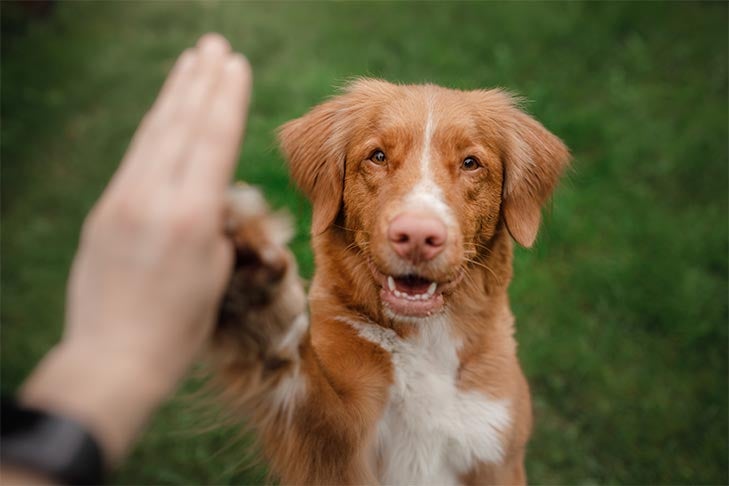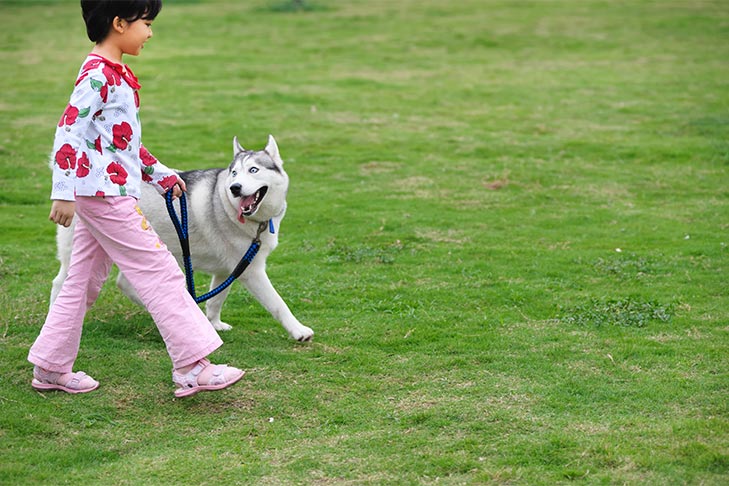
When Claudia Fugazza discovered that her dog knew how to turn on the bathroom faucet, the author was convinced her canine companion had learned through observation, and it inspired her to dig into scientific literature on the subject.
Researchers in the Ethology Department at the University of Budapest published a paper in 2006 reporting that a Belgian Tervuren, named Philip, could copy a human’s actions after a bit of training. Was Philip some kind of dog genius or can any dog be taught to imitate his owner? Fugazza was determined to find out. She documented her journey in the book, “Do As I Do: Using Social Learning to Train Dogs.”
Observing and copying others can help an animal survive in the wild. But not all animals are believed to possess this ability. “From a scientific perspective, imitation requires some complex cognitive skills,” says Fugazza. “It is unlikely that species that did not evolve in a very complex and rich social environment needed to evolve this ability.”
However, dogs can do it, thanks in part to domestication. As Fugazza explains, they “evolved in the human environment, which is extremely complex from the social point of view.”
You can test out a dog’s imitation skills using the training methods Fugazza presents in her book. The basic procedure, called “Do As I Do,” works like this:
- Choose three behaviors that your dog can do solely with a verbal cue — no hand signal or other gesture required. These need to be behaviors you can do, too. Unless you want to jump through a hoop, don’t choose that as one of the behaviors.
- Use those behaviors to teach your dog a general command that means “copy me.” Fugazza uses “do it.” For example, say you’ve chosen “spin” as one of the behaviors. First, have your dog stay. Then, do the spin yourself. Immediately afterwards, say “do it” to your dog, followed by “spin.” If your dog spins, reward him for the behavior.
- As you do this repeatedly for the three different behaviors in random order, your dog will start anticipating, and offer up the behavior before you say “spin.” Once that happens, start dropping the old command.

When your dog can successfully perform the three chosen behaviors just by hearing the command “do it,” it’s time to generalize. Pick three more behaviors your dog already knows, and try to get him to copy you just by saying “do it,” without using the familiar verbal command. Once your dog is performing these known behaviors by copying you, you can use “do it” to train new things.
This technique isn’t meant to replace other training methods, but to supplement them. After all, your dog needs to know at least six different behaviors before you can test this process. “I would never use ‘Do As I Do’ to teach actions like walking on leash or recall,” Fugazza says. But complex and goal-oriented actions can be trained more quickly this way.
Research has shown that although dogs learn from us in a similar way that a child does, there are still significant differences. For example, a study conducted in 2016 showed that dogs don’t do something human children do called “overimitation.” If you show a child how to do a puzzle box and include an unnecessary step, he will almost always do the unnecessary step. Dogs will not. Once they figure out which steps are actually required to open the box, dogs will only perform those necessary actions. “It’s been argued that if children are going to be able to learn all of our complex cultural rituals and technology, they can’t question everything they’re told,” says researcher Angie Johnston. “It’s better to just copy.”
While there are also studies that look at how dogs imitate the actions of other dogs, there are not as many. “Humans are the better teachers and better trainers — that’s why we use humans in these tasks,” says Johnston.
Our unique relationship with dogs is what makes this research particularly interesting. Johnston adds, “It’s cool to understand dogs just for understanding dogs, but it also does tell us a bit about ourselves.”

